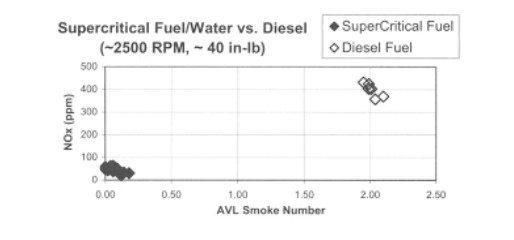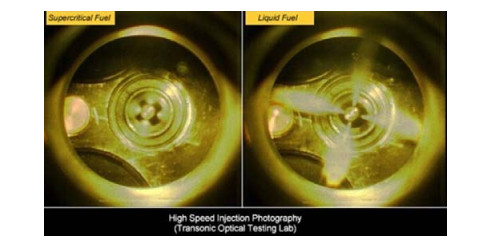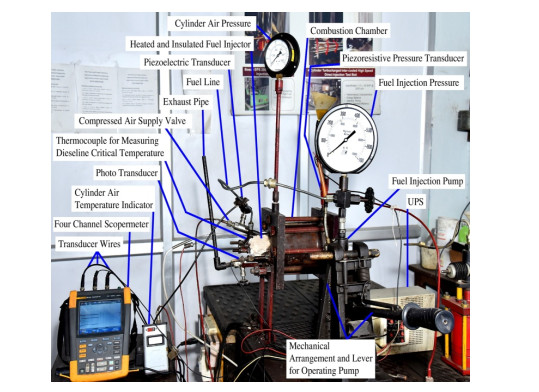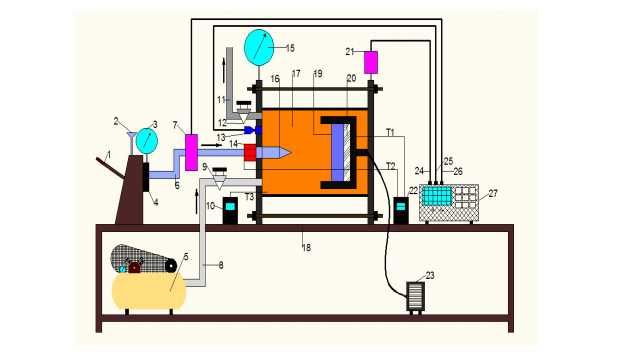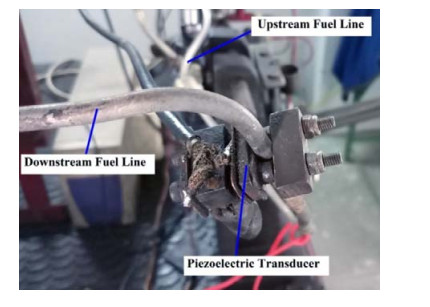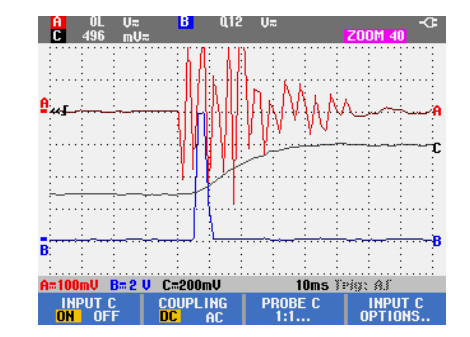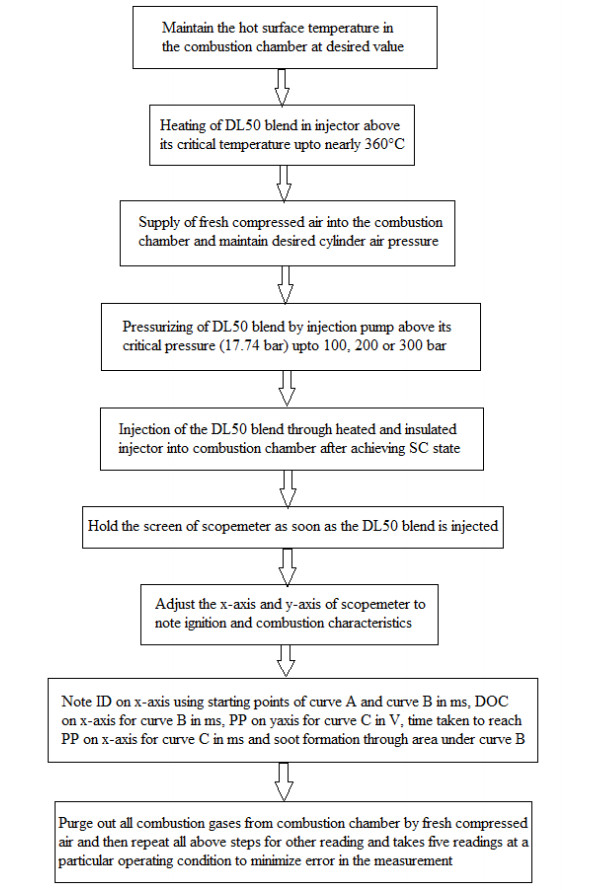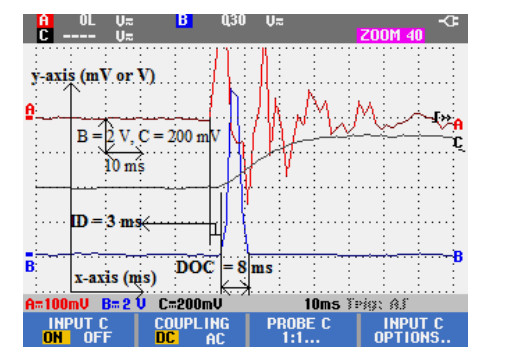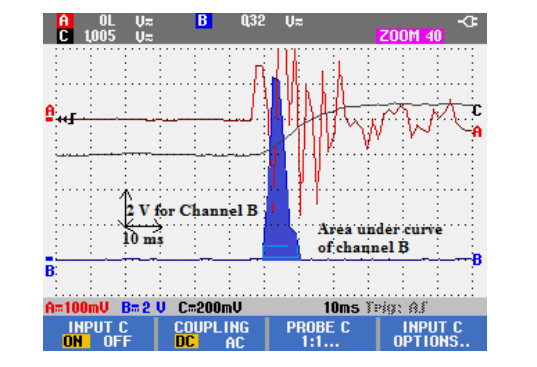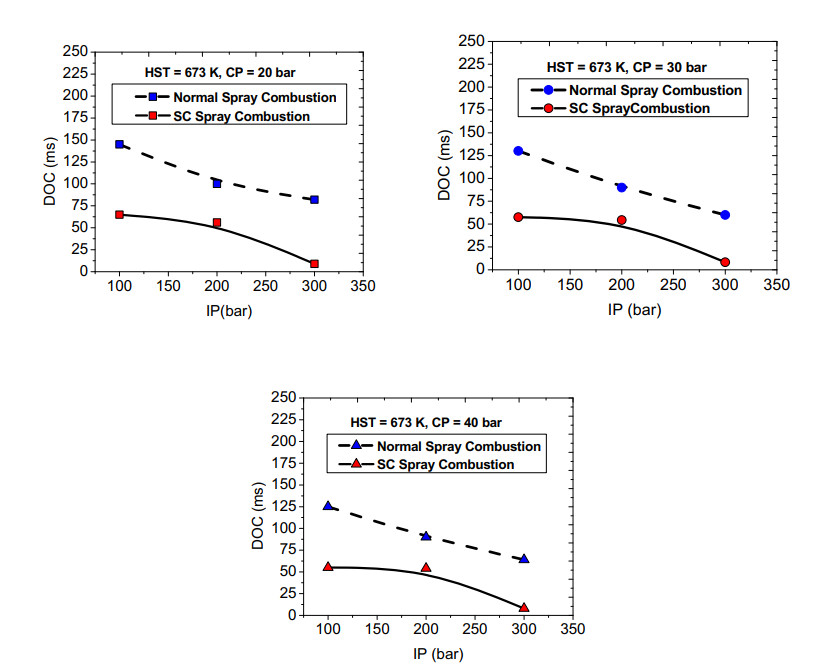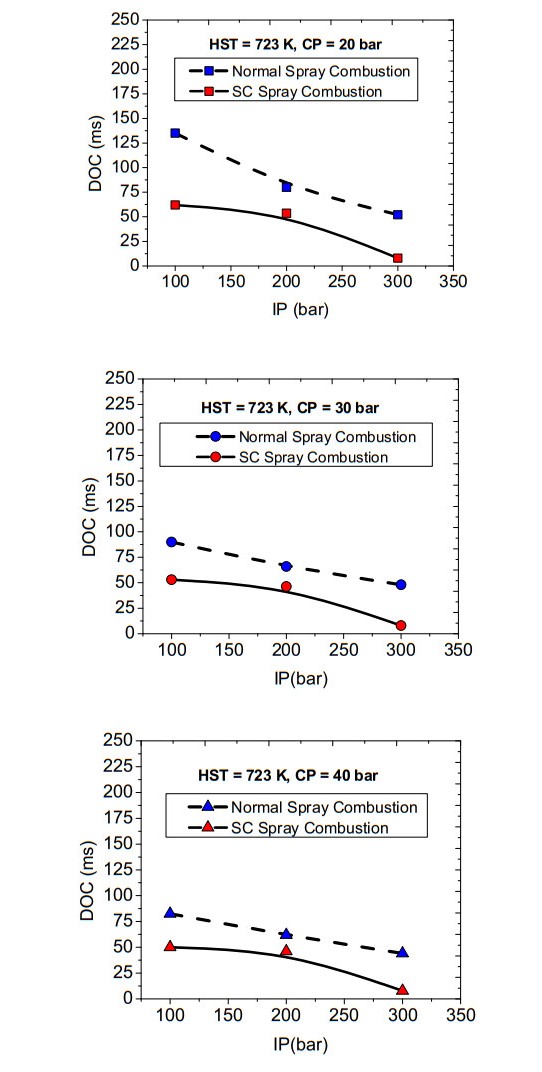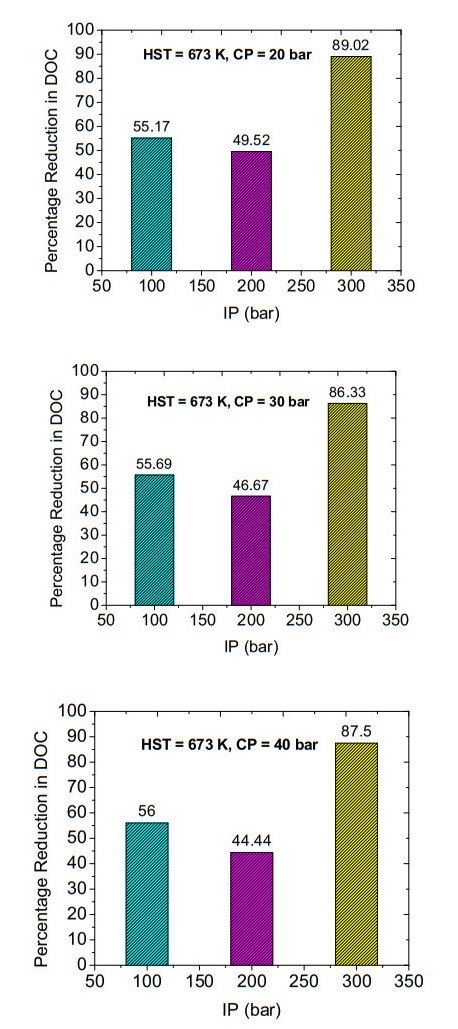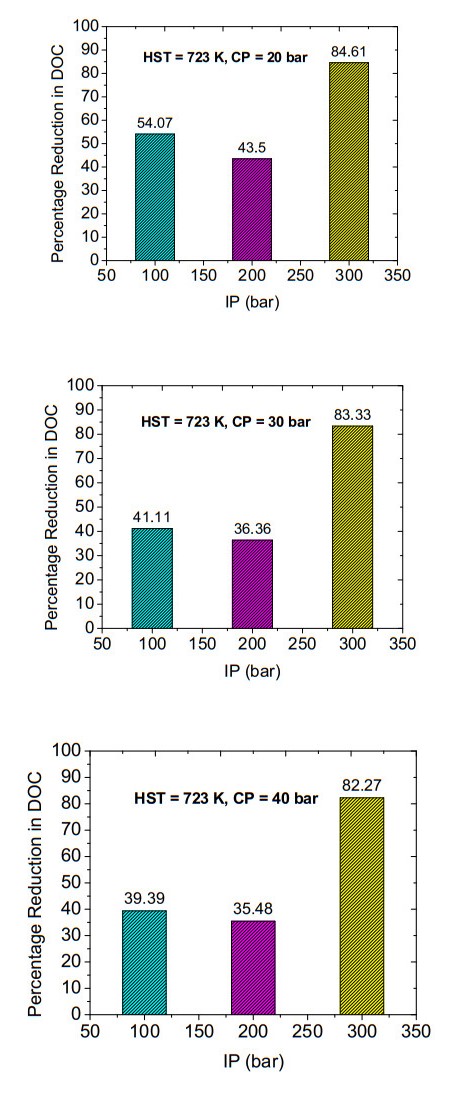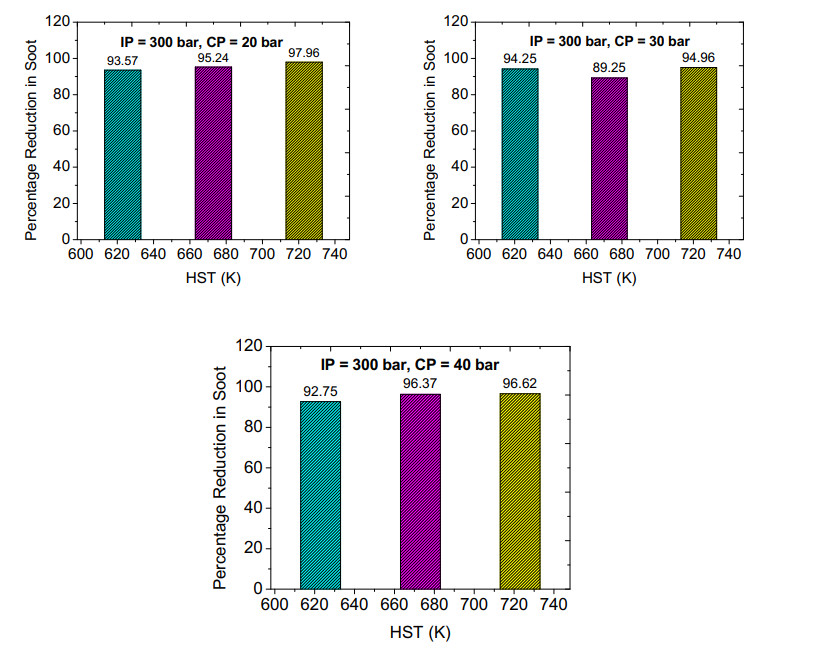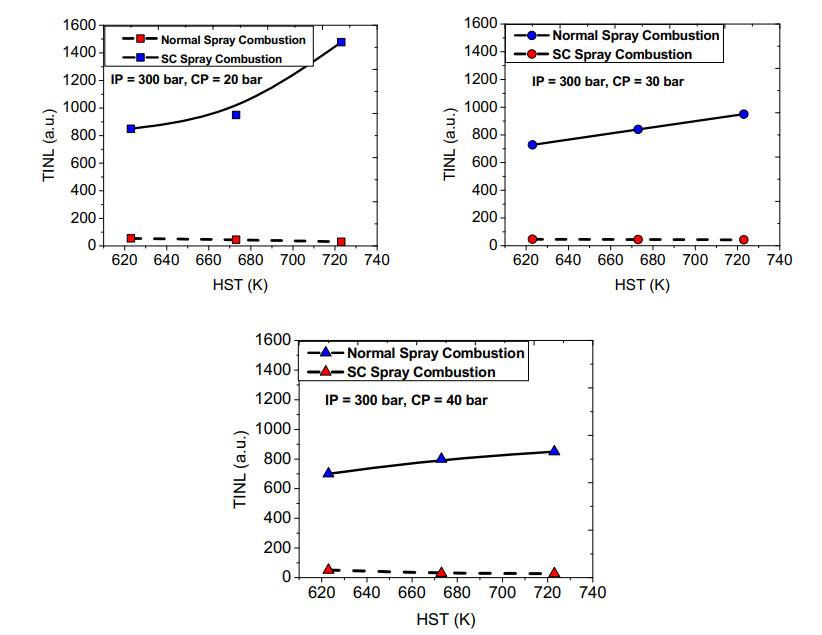|
[1]
|
Happé F (2015) Autism as a neurodevelopmental disorder of mind-reading. Abstr Book 3: 197–209.
|
|
[2]
|
Dover CJ, Le Couteur AL (2007) How to diagnose Autism. Arch Dis Child 92: 540–545. doi: 10.1136/adc.2005.086280

|
|
[3]
|
Jukić V, Arbanas G (2013) Diagnostic and Statistical Manual of Mental Disorders; Fifth Edition (DSM-5).Int J 57: 1546–1548.
|
|
[4]
|
Fombonne E (2009) Epidemiology of pervasive developmental disorders. Pediatr Res 65: 591–598. doi: 10.1203/PDR.0b013e31819e7203

|
|
[5]
|
Fombonne E, Quirke S, Hagen A (2009) Prevalence and interpretation of recent trends in rates of pervasive developmental disorders. McGill J Med 12: 73.
|
|
[6]
|
Weintraub K (2011) Autism counts. Nature 479: 22–24. doi: 10.1038/479022a

|
|
[7]
|
Nazeer A, Ghaziuddin M (2012) Autism spectrum disorders: Clinical features and diagnosis. Pediatr Clin North Am 59: 19–25. doi: 10.1016/j.pcl.2011.10.007

|
|
[8]
|
Zablotsky B, Black LI, Maenner MJ, et al. (2015) Estimated prevalence of autism and other developmental disabilities following questionnaire changes in the 2014 national health interview survey. Natl Health Stat Rep 2015: 1–20.
|
|
[9]
|
Hansen SN, Schendel DE, Parner ET (2015) Explaining the increase in the prevalence of autism spectrum disorders the proportion attributable to changes in reporting practices. JAMA Pediatr 169: 56–62. doi: 10.1001/jamapediatrics.2014.1893

|
|
[10]
|
Mostafa GA, ALayadhi LY (2012) Reduced serum concentrations of 25-hydroxy vitamin D in children with autism: Relation to autoimmunity. J Neuroinflammation 9: 1–7.
|
|
[11]
|
Duan XY, Jia FY, Jiang HY (2013) Relationship between vitamin D and autism spectrum disorder. Chin J Contemp Pediatr 15: 698–702.
|
|
[12]
|
Newschaffer CJ, Croen LA, Daniels J, et al. (2007) The epidemiology of autism spectrum disorders. Annu Rev Public Health 28: 235–258. doi: 10.1146/annurev.publhealth.28.021406.144007

|
|
[13]
|
Christison GW, Ivany K (2006) Elimination diets in autism spectrum disorders: Any wheat amidst the chaff? J Dev Behav Pediatr 27: S162–S171. doi: 10.1097/00004703-200604002-00015

|
|
[14]
|
Meyer U, Feldon J, Dammann O (2011) Schizophrenia and autism: Both shared and disorder-specific pathogenesis via perinatal inflammation? Pediatr Res 69: 26R–33R.
|
|
[15]
|
Wagner CL, Taylor SN, Dawodu A, et al. (2012) Vitamin D and its role during pregnancy in attaining optimal health of mother and fetus. Nutrients 4: 208–230.
|
|
[16]
|
Abdulbari B, Oaa AHA, Saleh NM (2013) Association between vitamin D insufficiency and adverse pregnancy outcome: Global comparisons. Int J Womens Health 5: 523.
|
|
[17]
|
Georgieff MK (2007) Nutrition and the developing brain: Nutrient priorities and measurement. Am J Clin Nutr85: 614S–620S.
|
|
[18]
|
Al-Farsi YM, Waly MI, Deth RC, et al. (2013) Impact ofnutrition on serum levels of docosahexaenoic acid among Omani children with autism. Nutrition 29: 1142–1146.
|
|
[19]
|
Bell JG, Mackinlay EE, Dick JR, et al. (2004) Essential fatty acids and phospholipase A2 in autistic spectrum disorders. Prostaglandins Leukotrienes Essent Fatty Acids 71: 201–204.
|
|
[20]
|
Amminger GP, Berger GE, Schafer MR, et al. (2007) Omega-3 fatty acids supplementation in children with autism: A double-blind randomized, placebo-controlled pilot study. Biol Psychol 61: 551–553.
|
|
[21]
|
Meguid NA, Atta HM, Gouda AS, et al. (2008) Role of polyunsaturated fatty acids in the management of Egyptian children with autism. Clin Biochem 41: 1044–1048.
|
|
[22]
|
Meiri G, Bichovsky Y, Belmaker RH (2009) Omega 3 fatty acid treatment in autism. J Child Adolesc Psychopharmacol 19: 449–451.
|
|
[23]
|
El-Ansary AK, Ben BAG, Al-Ayahdi LY (2011) Impaired plasma phospholipids and relative amounts of essential polyunsaturated fatty acids in autistic patients from Saudi Arabia. Lipids Health Dis 10: 63. doi: 10.1186/1476-511X-10-63

|
|
[24]
|
Yui K, Koshiba M, Nakamura S, et al. (2012) Effects of large doses of arachi-donic acid added to docosahexaenoic acid on social impairment in individuals with autism spectrum disorders: A double-blind, placebo-controlled, randomized trial. J Clin Psychopharmacol 32: 200–206.
|
|
[25]
|
Gómezpinilla F (2008) Brainfoods: The effect of nutrients on brain function. Nat Rev Neurosci 9: 568–578.
|
|
[26]
|
Willis LM, Shukitt-Hale BJ (2009) Recent advances in berry supplementation and age-related cognitive decline. Curr Opin Clin Nutr Metab Care 12: 91–94. doi: 10.1097/MCO.0b013e32831b9c6e

|
|
[27]
|
Gu Y, Nieves JW, Stern Y, et al. (2010) Food combination and Alzheimer disease risk: A protective diet. Arch Neurol 67: 699–706.
|
|
[28]
|
Nyaradi A, Li J, Hickling S, et al. (2013) The role of nutrition in children's neurocognitive development, from pregnancy through childhood. Front Hum Neurosci 7: 97.
|
|
[29]
|
Prado EL, Dewey KG (2014) Nutrition and brain development in early life. Nutr Rev 72: 267–284.
|
|
[30]
|
Keunen K, Elburg RMV, Bel FV, et al. (2014) Impact of nutrition on brain development and its neuroprotective implications following preterm birth. Pediatr Res 77: 148–155.
|
|
[31]
|
Georgieff MK, Rao R, (2001) The role of nutrition in cognitive development. In: Nelson CA, Luciana M, Eds.,Handbook in developmental cognitive neuroscience.Cambridge, MA: MIT Press, 491–504.
|
|
[32]
|
Hultman CM, Sparén P, Cnattingius S (2002) Perinatal risk factors for infantile autism. Epidemiology 13: 417–423.
|
|
[33]
|
Dionne G, Boivin M, Seguin JR. et al. (2008) Gestational diabetes hinders language development in offspring. Pediatrics 122: 1073–1079.
|
|
[34]
|
Leonard H, Klerk N, Bourke J, et al. (2006) Maternal health in pregnancy and intellectual disability in the offspring: A population-based study. Ann Epidemiol 16: 448–454.
|
|
[35]
|
Dodds L, Fell DB, Shea S, et al. (2011) The role of prenatal, obsteric and neonatal factors in the development of autism. J Autism Dev Disord 41: 891–902.
|
|
[36]
|
Burdge GC, Lillycrop KA (2014) Fatty acids and epigenetics. Curr Opin Clin Nutr Metab Care 17: 156–161. doi: 10.1097/MCO.0000000000000023

|
|
[37]
|
Delong GR (1993) Effects of nutrition on brain development in humans. Am J Clin Nutr 57: S286–S290.
|
|
[38]
|
Morgane PJ, Mokler DJ, Galler JR (2002) Effects of prenatal protein malnutrition on the hippocampal formation. Neurosci Biobehav Rev 26: 471–483. doi: 10.1016/S0149-7634(02)00012-X

|
|
[39]
|
Rosales FJ, Reznick JS, Zeisel SH (2009) Understanding the role of nutrition in the brain and behavioral development of toddlers and preschool children: Identifying and addressing methodological barriers. Nutr Neurosci 12: 190–202. doi: 10.1179/147683009X423454

|
|
[40]
|
Mccann JC, Ames BN (2005) Is docosahexaenoic acid, an n-3 long-chain polyunsaturated fatty acid, required for development of normal brain function? An overview of evidence from cognitive and behavioral tests in humans and animals. Am J Clin Nutr 82: 281–295.
|
|
[41]
|
Innis SM (2007) Dietary (n-3) fatty acids and brain development. J Nutr 137: 855–859. doi: 10.1093/jn/137.4.855

|
|
[42]
|
Wu A, Ying Z, Gomezpinilla F (2007) Omega-3 fatty acids supplementation restores mechanisms that maintain brain homeostasis in traumatic brain injury. J Neurotrauma 24: 1587–1595.
|
|
[43]
|
De Souza AS, Fernandes FS (2011) Effects of maternal malnutrition and postnatal nutritional rehabilitation on brain fatty acids, learning, and memory. Nutr Rev 69: 132–144.
|
|
[44]
|
Lozoff B, Georgieff MK (2006) Iron deficiency and brain development. Semin Pediatr Neurol 13: 158–165.
|
|
[45]
|
Zimmermann MB (2011) The role of iodine in human growth and development. Semin Cell Dev Biol 22: 645–652.
|
|
[46]
|
Greenwood CE, Winocur G (2005) High-fat diets, insulin resistance and declining cognitive function. Neurobiol Aging 26: 42–45.
|
|
[47]
|
Molteni R, Barnard RJ, Ying Z, et al. (2002) A high-fat, refined sugar diet reduces hippocampal brain-derived neurotrophic factor, neuronal plasticity, and learning. Neuroscience 112: 803–814.
|
|
[48]
|
Rice D, Barone S (2000) Critical periods of vulnerability for the developing nervous system: Evidence from humans and animal models. Environ Health Perspect 108: 511–533.
|
|
[49]
|
Couperus JW,Nelson CA,(2006) Early brain development and plasticity. In: McCartney K, Phillips D, Eds.,The Blackwell Handbook of Early Childhood Development.Malden, MA: Blackwell Publsihing,85–105.
|
|
[50]
|
Benton D (2010) The influence of dietary status on the cognitive performance of children. Mol Nutr Food Res 54: 457–470.
|
|
[51]
|
Levitsky DA, Strupp BJ (1995) Malnutrition and the brain: Changing concepts, changing concerns. J Nutr 125: 2212S–2220S. doi: 10.1093/jn/125.suppl_8.2212S

|
|
[52]
|
Penido AB, Rezende GH, Abreu RV, et al. (2012) Malnutrition during central nervous system growth and development impairs permanently the subcortical auditory pathway. Nutr Neurosci 15: 31–36. doi: 10.1179/1476830511Y.0000000022

|
|
[53]
|
Roseboom TJ, Painter RC, Van Abeelen AF, et al. (2011) Hungry in the womb: What are the consequences? Lessons from the Dutch famine. Maturitas 70: 141–145.
|
|
[54]
|
Kerac M, Postels DG, Mallewa M, et al. (2014) The interaction of malnutrition and neurologic disability in Africa. Semin Pediatr Neurol 21: 42–49. doi: 10.1016/j.spen.2014.01.003

|
|
[55]
|
Jacka FN, Pasco JA, Mykletun A, et al. (2010) Association of western and traditional diets with depression and anxiety in women. Am J Psychiatry 167: 305–311. doi: 10.1176/appi.ajp.2009.09060881

|
|
[56]
|
Jacka FN, Pasco JA, Mykletun A, et al. (2011) Diet quality in bipolar disorder in a population-based sample of women. J Affective Disord 129: 332–337. doi: 10.1016/j.jad.2010.09.004

|
|
[57]
|
Forsyth AK, Williams PG, Deane FP (2011) Nutrition status of primary care patients with depression and anxiety. Aust J Primary Health 18: 172–176.
|
|
[58]
|
Scarmeas N, Stern Y, Tang MX, et al. (2006) Mediterranean diet and risk for Alzheimer's disease. Ann Neurol 59: 912–921. doi: 10.1002/ana.20854

|
|
[59]
|
Francesco S, Francesca C, Rosanna A, et al. (2008) Adherence to Mediterranean diet and health status: A meta-analysis. BMJ 337: a1344. doi: 10.1136/bmj.a1344

|
|
[60]
|
Scarmeas N, Stern Y, Mayeux R, et al. (2009) Mediterranean diet and mild cognitive impairment. Arch Neurol 66: 216–225.
|
|
[61]
|
Eilander A, Gera T, Sachdev HS, et al. (2010) Multiple micronutrient supplementation for improving cognitive performance in children: Systematic review of randomised controlled trials. Am J Clin Nutr 91: 115–130. doi: 10.3945/ajcn.2009.28376

|
|
[62]
|
Schoenthaler SJ, Amos S, Doraz W, et al. (1997) The effect of randomized vitamin-mineral supplementation on violent and non-violent antisocial behavior among incarcerated juveniles. J Nutr Environ Med 7: 343–352. doi: 10.1080/13590849762475

|
|
[63]
|
Schoenthaler SJ, Bier ID (1999) Vitamin-mineral intake and intelligence: A macrolevel analysis of randomised controlled trials. J Altern Complementary Med 5: 125–134. doi: 10.1089/acm.1999.5.125

|
|
[64]
|
Zaalberg A, Nijman H, Bulten E, et al. (2010) Effects of nutritional supplements on aggression, rule-breaking, and psychopathology among young adult prisoners. Aggressive Behav 36: 117–126. doi: 10.1002/ab.20335

|
|
[65]
|
Buffington SA, Di PG, Auchtung TA, et al. (2016) Microbial reconstitution reverses maternal diet-induced social and synaptic deficits in offspring. Cell 165: 1762–1775. doi: 10.1016/j.cell.2016.06.001

|
|
[66]
|
Bazinet RP, Layé S (2014) Polyunsaturated fatty acids and their metabolites in brain function and disease. Nat Rev Neurosci 15: 771–785. doi: 10.1038/nrn3820

|
|
[67]
|
Innis S, De-La-Presa-Owens S (2001) Dietary fatty acid composition in pregnancy alters neurite membrane fatty acids and dopamine in newborn rat brain. J Nutr 131: 118–122. doi: 10.1093/jn/131.1.118

|
|
[68]
|
Pardo CA, Eberhart CG (2007) The neurobiology of autism. Brain Pathol 17: 434–447. doi: 10.1111/j.1750-3639.2007.00102.x

|
|
[69]
|
Chalon S (2006) Omega-3 fatty acids and monoamine neurotransmission. Prostaglandins Leukotrienes Essent Fatty Acids 75: 259–269. doi: 10.1016/j.plefa.2006.07.005

|
|
[70]
|
Zimmer L, Delpal S, Guilloteau D, et al. (2000) Chronic n-3 polyunsaturated fatty acid deficiency alters dopamine vesicle density in the rat frontal cortex. Neurosci Lett 284: 25–28. doi: 10.1016/S0304-3940(00)00950-2

|
|
[71]
|
Aïd S, Vancassel S, Poumès-Ballihaut C, et al. (2003) Effect of a diet-induced n-3 PUFA depletion on cholinergic parameters in the rat hippocampus. J Lipid Res 44: 1545–1551. doi: 10.1194/jlr.M300079-JLR200

|
|
[72]
|
Takeuchi T, Iwanaga M, Harada E (2003) Possible regulatory mechanism of DHA-induced anti-stress reaction in rats. Brain Res 964: 136–143. doi: 10.1016/S0006-8993(02)04113-6

|
|
[73]
|
Fedorova I, Alvheim AR, Hussein N, et al. (2009) Deficit in prepulse inhibition in mice caused by dietary n-3 fatty acid deficiency. Behav Neurosci 123: 1218–1225. doi: 10.1037/a0017446

|
|
[74]
|
Larrieu T, Hilal LM, Fourrier C, et al. (2014) Nutritional omega-3 modulates neuronal morphology in the prefrontal cortex along with depression-related behaviour through corticosterone secretion. Transl Psychiatry 4: e437. doi: 10.1038/tp.2014.77

|
|
[75]
|
Larrieu T, Madore C, Joffre C, et al. (2012) Nutritional n-3 polyunsaturated fatty acids deficiency alters cannabinoid receptor signalling pathway in the brain and associated anxiety-like behavior in mice. J Physiol Biochem 68: 671–681. doi: 10.1007/s13105-012-0179-6

|
|
[76]
|
Jones ML, Mark PJ, Waddell BJ (2013) Maternal omega-3 fatty acid intake increases placental labyrinthine antioxidant capacity but does not protect against fetal growth restriction induced by placental ischaemia-reperfusion injury. Reproduction 146: 539–547. doi: 10.1530/REP-13-0282

|
|
[77]
|
Li Q, Leung YO, Zhou I, et al. (2015) Dietary supplementation with n-3 fatty acids from weaning limits brain biochemistry and behavioural changes elicited by prenatal exposure to maternal inflammation in the mouse model. Transl Psychiatry 5: e641. doi: 10.1038/tp.2015.126

|
|
[78]
|
Labrousse VF, Nadjar A, Joffre C, et al. (2012) Short-term long chain Omega3 diet protects from neuroinflammatory processes and memory impairment in aged mice. PLoS One 7: e36861. doi: 10.1371/journal.pone.0036861

|
|
[79]
|
Kerr M (2008) Neurodevelopmental delays associated with iron-fortified formula for healthy infants. Med Psychiatry Mental Health.
|
|
[80]
|
Stein Z, Susser M, Saenger G, et al. (1975) Famine and human development: The Dutch hunger winter of 1944–1945. Q Rev Biol 7: 1944–1945.
|
|
[81]
|
Hoek HW, Susser E, Buck KA, et al. (1996) Schizoid personality disorder after prenatal exposure to famine. Am J Psychiatry 153: 1637–1639. doi: 10.1176/ajp.153.12.1637

|
|
[82]
|
Susser E, Neugebauer R, Hoek HW, et al. (1996) Schizophrenia after prenatal famine: Further evidence. Arch Gen Psychiatry 53: 25–31. doi: 10.1001/archpsyc.1996.01830010027005

|
|
[83]
|
Susser E, Hoek HW, Brown A (1998) Neurodevelopmental Disorders after Prenatal Famine: The Story of the Dutch Famine Study. Am J Epidemiol 147: 214–216.
|
|
[84]
|
Millichap JG, Yee MM (2012) The Diet Factor in Attention-Deficit/hyperactivity disorder. Paediatrics 129: 330. doi: 10.1542/peds.2011-2199

|
|
[85]
|
Surén P, Roth C, Bresnahan M, et al. (2013) Association between maternal use of folic acid supplements and risk of autism spectrum disorders in children. J Am Med Assoc 309: 570–577. doi: 10.1001/jama.2012.155925

|
|
[86]
|
Grant WB, Soles CM (2009) Epidemiologic evidence supporting the role of maternal vitamin D deficiency as a risk factor for the development of infantile autism. Dermatoendocrinology 1: 223–228. doi: 10.4161/derm.1.4.9500

|
|
[87]
|
Blaylock RL (2009) Possible central mechanism in autism spectrum disorders, part 3: The role of excitotoxin food additives and the synergistic effects of other environmental toxins. Altern Ther Health Med 15: 56–60.
|
|
[88]
|
Macfabe DF, Cain DP, Rodriguez-Capote K, et al. (2007) Neurobiological effects of intraventricular propionic acid in rats: Possible role of short chain fatty acids on the pathogenesis and characteristics of autism spectrum disorders.Behav Brain Res176: 149–169.
|
|
[89]
|
Macfabe DF, Cain NE, Boon F, et al. (2011) Effects of the enteric bacterial metabolic product propionic acid on object-directed behavior, social behavior, cognition, and neuroinflammation in adolescent rats: Relevance to autism spectrum disorder. Behav Brain Res 217: 47–54. doi: 10.1016/j.bbr.2010.10.005

|
|
[90]
|
El-Ansary AK, Bacha AB, Kotb M (2012) Etiology of autistic features: The persisting neurotoxic effects of propionic acid. J Neuroinflammation 9: 74.
|
|
[91]
|
Bourgeron T (2007) The possible interplay of synaptic and clock genes in autism spectrum disorders. Cold Spring Harb Symp Quant Biol 72: 645–654. doi: 10.1101/sqb.2007.72.020

|
|
[92]
|
Bourgeron T (2009) A synaptic trek to autism. Curr Opin Neurobiol 19: 231–234. doi: 10.1016/j.conb.2009.06.003

|
|
[93]
|
Bourgeron T (2015) From the genetic architecture to synaptic plasticity in autism spectrum disorder. Nat Rev Neurosci 16: 551–563. doi: 10.1038/nrn3992

|
|
[94]
|
Oberman LM, Ifertmiller F, Najib U, et al. (2016) Abnormal echanisms of plasticity and metaplasticity in autism spectrum disorders and fragile X syndrome. J Child Adolesc Psychopharmacol 26: 617–624. doi: 10.1089/cap.2015.0166

|
|
[95]
|
Georgieff MK, Brunette KE, Tran PV (2015) Early life nutrition and neural plasticity. Dev Psychopathol 27: 411–423. doi: 10.1017/S0954579415000061

|
|
[96]
|
Madore C, Nadjar A, Delpech JC, et al. (2014) Nutritional n-3 PUFAs deficiency during perinatal periods alters brain innate immune system and neuronal plasticity-associated genes. Brain Behav Immun 41: 22–31. doi: 10.1016/j.bbi.2014.03.021

|
|
[97]
|
Lafourcade M, Larrieu T, Mato S, et al. (2011) Nutritional omega-3 deficiency abolishes endocannabinoid-mediated neuronal functions. Nat Neurosci 14: 345–350. doi: 10.1038/nn.2736

|
|
[98]
|
Thomazeau A, Boschbouju C, Manzoni O, et al. (2016) Nutritional n-3 PUFA deficiency abolishes endocannabinoid gating of hippocampal long-term potentiation. Cereb Cortex 27: 2571–2579.
|
|
[99]
|
Fatemi SH, Aldinger KA, Ashwood P, et al. (2012) Consensus paper: Pathological role of the cerebellum in autism. Cerebellum 11: 777–807. doi: 10.1007/s12311-012-0355-9

|
|
[100]
|
Harada M, Taki MM, Nose A, et al. (2011) Non-invasive evaluation of the gabaergic/glutamatergic system in autistic patients observed by mega-editing proton MR spectroscopy using a clinical 3 tesla instrument. J Autism Dev Disord 41: 447–454. doi: 10.1007/s10803-010-1065-0

|
|
[101]
|
Blatt GJ, Fatemi SH (2011) Alterations in gabaergic biomarkers in the autism brain: Research findings and clinical implications. Anat Rec 294: 1646–1652. doi: 10.1002/ar.21252

|
|
[102]
|
Hogart A, Leung KN, Wang NJ, et al. (2009) Chromosome 15q11-13 duplication syndrome brain reveals epigenetic alterations in gene expression not predicted from copy number. J Med Genet 46: 86–93.
|
|
[103]
|
Xu LM, Li JR, Huang Y, et al. (2012) Autismkb: An evidence-based knowledgebase of autism genetics. Nucleic Acids Res 40: 1016–1022. doi: 10.1093/nar/gkr1145

|
|
[104]
|
Jamain S, Betancur C, Quach H, et al. (2002) Linkage and association of the glutamate receptor 6 gene with autism. Mol Psychiatry 7: 302–310. doi: 10.1038/sj.mp.4000979

|
|
[105]
|
Yang Y, Pan C (2013) Role of metabotropic glutamate receptor 7 in autism spectrum disorders: A pilot study. Life Sci 92: 149–153. doi: 10.1016/j.lfs.2012.11.010

|
|
[106]
|
Yip J, Soghomonian JJ, Blatt GJ (2007) Decreased GAD67 mrna levels in cerebellar purkinje cells in autism: Pathophysiological implications. Acta Neuropathol 113: 559–568. doi: 10.1007/s00401-006-0176-3

|
|
[107]
|
Aldred S, Moore KM, Fitzgerald M, et al. (2003) Plasma amino acid levels in children with autism and their families. J Autism Dev Disord 33: 93–97. doi: 10.1023/A:1022238706604

|
|
[108]
|
Shinohe A, Hashimoto K, Nakamura K, et al. (2006) Increased serum levels of glutamate in adult patients with autism. Prog Neuropsychopharmacology Biol Psychiatry 30: 1472–1477. doi: 10.1016/j.pnpbp.2006.06.013

|
|
[109]
|
Sutcliffe JS, Delahanty RJ, Prasad HC, et al. (2005) Allelic heterogeneity at the serotonin transporter locus (slc6a4) confers susceptibility to autism and rigid-compulsive behaviors. Am J Hum Genet 77: 265–279.
|
|
[110]
|
Levitt P (2011) Serotonin and the autisms: A red flag or a red herring? Arch Gen Psychiatry 68: 1093–1094. doi: 10.1001/archgenpsychiatry.2011.98

|
|
[111]
|
Muller CL, Anacker AM, Veenstravanderweele J (2016) The serotonin system in autism spectrum disorder: From biomarker to animal models. Neuroscience 321: 24–41. doi: 10.1016/j.neuroscience.2015.11.010

|
|
[112]
|
Mccracken JT, Mcgough J, Shah B, et al. (2002) Risperidone in children with autism and serious behavioral problems. N Engl J Med 347: 314–321. doi: 10.1056/NEJMoa013171

|
|
[113]
|
Pavăl D (2017) A Dopamine Hypothesis of Autism Spectrum Disorder. Dev Neurosci 39: 355–360. doi: 10.1159/000478725

|
|
[114]
|
Nakamura K, Sekine Y, Ouchi Y, et al. (2010) Brain serotonin and dopamine transporter bindings in adults with high-functioning autism. Arch Gen Psychiatry 67: 59–68. doi: 10.1001/archgenpsychiatry.2009.137

|
|
[115]
|
Kałuzna-Czaplińska J, Socha E, Rynkowski J (2010) Determination of homovanillic acid and vanillylmandelic acid in urine of autistic children by gas chromatography/mass spectrometry. Med Sci Monit 16: CR445–CR450.
|
|
[116]
|
Anderson GH, Johnston JL (1983) Nutrient control of brain neurotransmitter synthesis and function. Can J Physiol Pharmacol 61: 271–281. doi: 10.1139/y83-042

|
|
[117]
|
Fernstrom JD, Fernstrom MH (2007) Tyrosine, phenylalanine, and catecholamine synthesis and function in the brain. J Nutr 137: 1539S–1547S. doi: 10.1093/jn/137.6.1539S

|
|
[118]
|
Schmidt RJ, Tancredi DJ, Krakowiak P, et al. (2014) Maternal intake of supplemental iron and risk of autism spectrum disorder. Am J Epidemiol 180: 890–900. doi: 10.1093/aje/kwu208

|
|
[119]
|
Eyles DW, Burne TH, Mcgrath JJ (2013) Vitamin D, effects on brain development, adult brain function and the links between low levels of vitamin D and neuropsychiatric disease. Front Neuroendocrinol 34: 47–64. doi: 10.1016/j.yfrne.2012.07.001

|
|
[120]
|
Whitehouse AJ, Holt BJ, Serralha M, et al. (2013) Maternal vitamin D levels and the autism phenotype among offspring. J Autism Dev Disord 43: 1495. doi: 10.1007/s10803-012-1676-8

|
|
[121]
|
Tylavsky FA, Kocak M, Murphy LE, et al. (2015) Gestational vitamin 25(OH)D status as a risk factor for receptive language development: A 24-month, longitudinal, observational study. Nutrients 7: 9918–9930. doi: 10.3390/nu7125499

|
|
[122]
|
Morales E, Guxens M, Llop S, et al. (2012) Circulating 25-hydroxyvitamin D3 in pregnancy and infant neuropsychological development. Pediatrics 130: e913–e920. doi: 10.1542/peds.2011-3289

|
|
[123]
|
Keim SA, Bodnar LM, Klebanoff MA (2014) Maternal and cord blood 25(OH)-vitamin D concentrations in relation to child development and behaviour. Paediatr Perinat Epidemiol 28: 434–444. doi: 10.1111/ppe.12135

|
|
[124]
|
Magnusson C, Rai D, Goodman A, et al. (2012) Migration and autism spectrum disorder: Population-based study. Br J Psychiatry 201: 109–115. doi: 10.1192/bjp.bp.111.095125

|
|
[125]
|
Holick MF (2007) Vitamin D deficiency. N Engl J Med 357: 266–281. doi: 10.1056/NEJMra070553

|
|
[126]
|
Vinkhuyzen AA, Eyles DW, Burne TH, et al. (2016) Gestational vitamin D deficiency and autism-related traits: The Generation R Study. Mol Psychiatry 23: 240–246.
|
|
[127]
|
Liu X, Liu J, Xiong X, et al. (2016) Correlation between Nutrition and Symptoms: Nutritional Survey of Children with Autism Spectrum Disorder in Chongqing, China. Nutrients 8: 294. doi: 10.3390/nu8050294

|
|
[128]
|
Egan AM, Dreyer ML, Odar CC, et al. (2013) Obesity in young children with autism spectrum disorders: Prevalence and associated factors. Child Obes 9: 125–131. doi: 10.1089/chi.2012.0028

|
|
[129]
|
Adams JB, Vogelaar AT, (2005) Nutritional abnormalities in autism and effects of nutritional supplementation, In: ASA's 36th National Conference on Autism Spectrum Disorders, Nashville, TN.
|
|
[130]
|
Strambi M, Longini M, Hayek J, et al. (2006) Magnesium profile in autism. Biol Trace Elem Res 109: 97–104. doi: 10.1385/BTER:109:2:097

|
|
[131]
|
Pineless SL, Avery RA, Liu GT (2010) Vitamin B12 optic neuropathy in autism. Pediatrics 126: e967–e970. doi: 10.1542/peds.2009-2975

|
|
[132]
|
Gong ZL, Luo CM, Wang L, et al. (2014) Serum 25-hydroxyvitamin D levels in Chinese children with autism spectrum disorders. Neuroreport 25: 23–27.
|
|
[133]
|
Kocovska E, Andorsdottir G, Weihe P, et al. (2014) Vitamin d in the general population of young adults with autism in the faroe islands. J Autism Dev Disord 44: 2996–3005. doi: 10.1007/s10803-014-2155-1

|
|
[134]
|
Filipek PA, Juranek J, Nguyen MT, et al. (2004) Relative carnitine deficiency in autism. J Autism Dev Disord 34: 615–623. doi: 10.1007/s10803-004-5283-1

|
|
[135]
|
Adams JB (2013) Summary of Dietary, Nutritional, and Medical Treatments for Autism-based on over 150 published research studies. Autism Reasearch Institute Publication 40-Version. Available from: http://autism.asu.edu.
|
|
[136]
|
Berry RC, Novak P, Withrow N, et al. (2015) Nutrition Management of Gastrointestinal Symptoms in Children with Autism Spectrum Disorder: Guideline from an Expert Panel. J Acad Nutr Diet 115: 1919–1927. doi: 10.1016/j.jand.2015.05.016

|
|
[137]
|
Stewart PA, Hyman SL, Schmidt BL, et al. (2015) Dietary Supplementation in Children with Autism Spectrum Disorders: Common, Insufficient, and Excessive. J Acad Nutr Diet 115: 1237–1248. doi: 10.1016/j.jand.2015.03.026

|
|
[138]
|
Santosh PJ, Singh J (2016) Drug treatment of autism spectrum disorder and its comorbidities in children and adolescents. BJ Psych Adv 22: 151–161.
|
|
[139]
|
Brondino N, Fusar-Poli L, Panisi C, et al. (2016) Pharmacological Modulation of GABA Function in Autism Spectrum Disorders: A Systematic Review of Human Studies. J Autism Dev Disord 46: 825–839. doi: 10.1007/s10803-015-2619-y

|
|
[140]
|
Kumar B, Prakash A, Sewal RK, et al. (2012) Drug therapy in autism: A present and future perspective. Pharmacol Rep 64: 1291–1304. doi: 10.1016/S1734-1140(12)70927-1

|
|
[141]
|
Doyle CA, Mcdougle CJ (2012) Pharmacologic treatments for the behavioral symptoms associated with autism spectrum disorders across the lifespan. Dialogues Clin Neurosci 14: 263–279.
|
|
[142]
|
Croen LA, Grether JK, Yoshida CK, et al. (2011) Antidepressant use during pregnancy and childhood autism spectrum disorders. Arch Gen Psychiatry 68: 1104–1112. doi: 10.1001/archgenpsychiatry.2011.73

|
|
[143]
|
Aman MG, Arnold LE, Mcdougle CJ, et al. (2005) Acute and long-term safety and tolerability of risperidone in children with autism. J Child Adolesc Psychopharmacol 15: 869–884. doi: 10.1089/cap.2005.15.869

|
|
[144]
|
Mcdougle CJ, Scahill L, Aman MG, et al. (2005) Risperidone for the core symptom domains of autism: Results from the study by the autism network of the research units on pediatric psychopharmacology. Am J Psychiatry 16: 1142–1148.
|
|
[145]
|
Buitelaar JK, Willemsen-Swinkels SHN (2000) Medication treatment in subjects with autistic spectrum disorders. Eur Child Adolesc Psychiatry 9: S85–S97. doi: 10.1007/s007870070022

|
|
[146]
|
Aoki Y, Yahata N, Watanabe T, et al. (2014) Oxytocin improves behavioural and neural deficits in inferring others' social emotions in autism. Brain 137: 3073–3086. doi: 10.1093/brain/awu231

|
|
[147]
|
Watanabe T, Abe O, Kuwabara H, et al. (2014) Mitigation of sociocommunicational deficits of autism through oxytocin-induced recovery of medial prefrontal activity: A randomized trial. JAMA Psychiatry 71: 166–175. doi: 10.1001/jamapsychiatry.2013.3181

|
|
[148]
|
Geraghty ME, Bates-Wall J, Ratliff-Schaub K, et al. (2010) Nutritional interventions and therapies in autism: A spectrum of what we know: Part 2. Ican Infant Child Adolesc Nutr 2: 120–133.
|
|
[149]
|
Geraghty ME, Depasquale GM, Lane AE (2010) Nutritional intake and therapies in autism: A spectrum of what we know: Part 1. Ican Infant Child Adolesc Nutr 2: 62–69. doi: 10.1177/1941406409358437

|
|
[150]
|
Marti LF (2014) Dietary interventions in children with autism spectrum disorders-an updated review of the research evidence. Curr Clin Pharmacol 9: 335–349. doi: 10.2174/15748847113086660074

|
|
[151]
|
Kawicka A, Regulska-Ilow B (2013) How nutrition status, diet and dietary supplements can affect autism. A review. Rocz Panstw Zakl Hig 64: 1–12.
|
|
[152]
|
Curtis LT, Patel K (2008) Nutritional and environmental approaches to preventing and treating autism and attention deficit hyperactivity disorder (ADHD): A review. J Altern Complement Med 14: 79–85. doi: 10.1089/acm.2007.0610

|
|
[153]
|
Kidd PM (2002) Autism, an extreme challenge to integrative medicine. Part II: Medical Management. Altern Med Rev 7: 472–499.
|
|
[154]
|
Kidd PM (2002) Autism, an extreme challenge to integrative medicine. Part 1: The knowledge base. Altern Med Rev 7: 292–316.
|
|
[155]
|
Pilla SSDD, Ravisankar P, Penugonda V, et al. (2014) Dietary interventions in Autism Spectrum Disorders. AP J Psychol Med 15: 24–31.
|
|
[156]
|
Joanna KCE, Rynkowski JB (2011) Vitamin supplementation reduces excretion of urinary dicarboxylic acids in autistic children. Nutr Res 31: 497–502. doi: 10.1016/j.nutres.2011.06.002

|
|
[157]
|
Mousainbosc M, Roche M, Polge A, et al. (2006) Improvement of neurobehavioral disorders in children supplemented with magnesium-vitamin B6. II. Pervasive developmental disorder-autism. Magnesium Res 19: 53–62.
|
|
[158]
|
Adams JB, Holloway C (2004) Pilot study of a moderate dose multivitamin/mineral supplement for children with autistic spectrum disorder. J Altern Complement Med 10: 1033–1039. doi: 10.1089/acm.2004.10.1033

|
|
[159]
|
Adams JB, Audhya T, Mcdonoughmeans S, et al. (2011) Effect of a vitamin/mineral supplement on children and adults with autism. BMC Pediatr 11: 111. doi: 10.1186/1471-2431-11-111

|
|
[160]
|
Cannell JJ (2008) Autism and vitamin D. Med Hypotheses 70: 750–759. doi: 10.1016/j.mehy.2007.08.016

|
|
[161]
|
Jia F, Wang B, Shan L, et al. (2015) Core symptoms of autism improved after vitamin D supplementation. Pediatrics 135: e196–e198. doi: 10.1542/peds.2014-2121

|
|
[162]
|
Saad K, Abdel-Rahman AA, Elserogy YM, et al. (2018) Randomized controlled trial of vitamin D supplementation in children with autism spectrum disorder. J Child Psychol Psychiatry 59: 20–29. doi: 10.1111/jcpp.12652

|
|
[163]
|
Jia F, Shan L, Wang B, et al. (2017) Bench to bedside review: Possible role of vitamin D in autism spectrum disorder. Psychiatry Res 260: 360–365.
|
|
[164]
|
Politi P, Cena H, Emanuele E (2011) Dietary Supplementation of Omega-3 Polyunsaturated Fatty Acids in Autism. Handb Behav Food Nutr 88: 1787–1796.
|
|
[165]
|
Malow BA, Adkins KW, Mcgrew SG, et al. (2012) Melatonin for sleep in children with autism: A controlled trial examining dose, tolerability, and outcomes. J Autism Dev Disord 42: 1729–1737. doi: 10.1007/s10803-011-1418-3

|
|
[166]
|
Reading R (2011) Melatonin in autism spectrum disorders: A systematic review and meta-analysis. Dev Med Child Neurol 53: 783–792. doi: 10.1111/j.1469-8749.2011.03980.x

|
|
[167]
|
Critchfield JW, Van HS, Ash M, et al. (2011) The potential role of probiotics in the management of childhood autism spectrum disorders. Gastroenterol Res Pract 2011: 161358.
|
|
[168]
|
Hsiao EY, Mcbride SW, Hsien S, et al. (2013) The microbiota modulates gut physiology and behavioral abnormalities associated with autism. Cell 155: 1451–1463. doi: 10.1016/j.cell.2013.11.024

|
|
[169]
|
Shaaban SY, El Gendy YG, Mehanna NS, et al. (2017) The role of probiotics in children with autism spectrum disorder: A prospective, open-label study. Nutr Neurosci 2017: 1–6.
|
|
[170]
|
Gvozdjáková A, Kucharská J, Ostatníková D, et al. (2014) Ubiquinol improves symptoms in children with autism. Oxid Med Cell Longevity 2014: 798957.
|
|
[171]
|
Geier DA, Kern JK, Davis G, et al. (2011) A prospective double-blind, randomized clinical trial of levocarnitine to treat autism spectrum disorders. Med Sci Monit 17: P115–P123.
|
|
[172]
|
Hardan AY, Fung LK, Libove RA, et al. (2012) A randomized controlled pilot trial of oral N-acetylcysteine in children with autism. Biol Psychiatry 71: 956–961. doi: 10.1016/j.biopsych.2012.01.014

|
|
[173]
|
Chez MG, Buchanan CP, Aimonovitch MC, et al. (2002) Double-blind, placebo-controlled study of L-carnosine supplementation in children with autistic spectrum disorders. J Child Neurol 17: 833–837. doi: 10.1177/08830738020170111501

|
|
[174]
|
Elder JH (2008) The gluten-free, casein-free diet in autism: An overview with clinical implications. Nutr Clin Pract 23: 583–588. doi: 10.1177/0884533608326061

|
|
[175]
|
Mulloy TA, Lang R, Reilly OM, et al. (2009) Gluten-free and casein-free diets in the treatment of autism spectrum disorders: A systematic review. Res Autism Spectrum Disord 4: 328–339.
|
|
[176]
|
Cade R, Privette M, Fregly M, et al. (2000) Autism and Schizophrenia: Intestinal disorders. Nutr Neurosci 3: 57–72. doi: 10.1080/1028415X.2000.11747303

|
|
[177]
|
Whiteley P, Haracopos D, Knivsberg AN, et al. (2010) The ScanBrit randomized, controlled, single-blind study of a gluten- and casein- free dietary intervention for children with autism spectrum disorders. Nutr Neurosci 13: 87–100. doi: 10.1179/147683010X12611460763922

|
|
[178]
|
Evangeliou A, Vlachonikolis I, Mihailidou H, et al. (2003) Application of a ketogenic diet in children with autistic behavior: Pilot study. J Child Neurol 18: 113–118. doi: 10.1177/08830738030180020501

|
|
[179]
|
Rossignol DA (2009) Novel and emerging treatments for autism spectrum disorders: A systematic review. Ann Clin Psychiatry 21: 213–236.
|
|
[180]
|
Elrashidy O, Elbaz F, Elgendy Y, et al. (2017) Ketogenic diet versus gluten free casein free diet in autistic children: A case-control study. Metab Brain Dis 32: 1935–1941. doi: 10.1007/s11011-017-0088-z

|
|
[181]
|
Strickland E (2009) Eating for Autism: The 10-step Nutrition Plan to Treat Your Child's Autism, Asperger's, or ADHD. Philadelphia, PA: Da Capo Press.
|
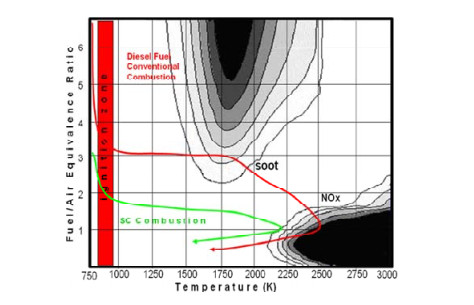









 DownLoad:
DownLoad:
